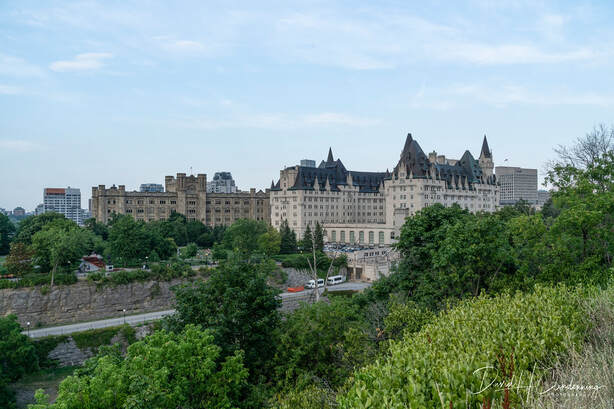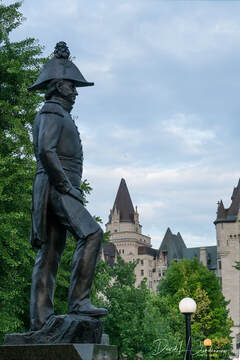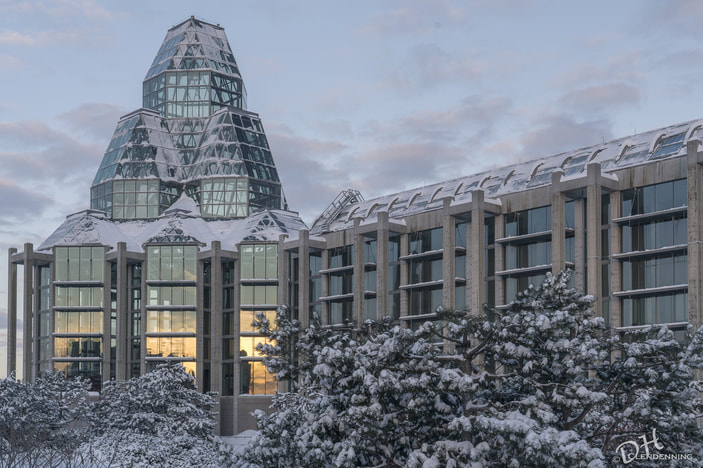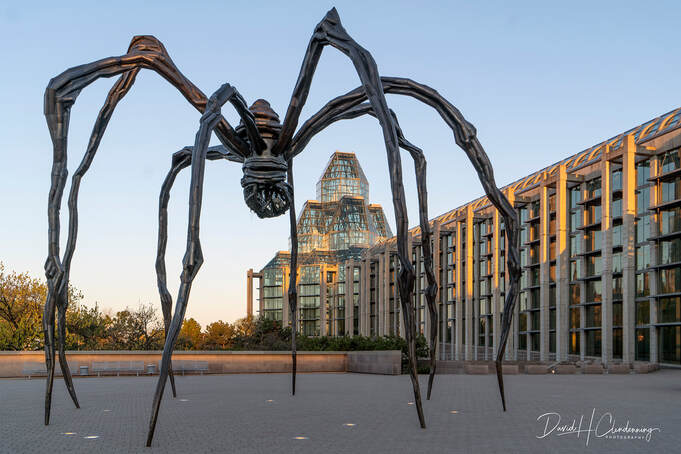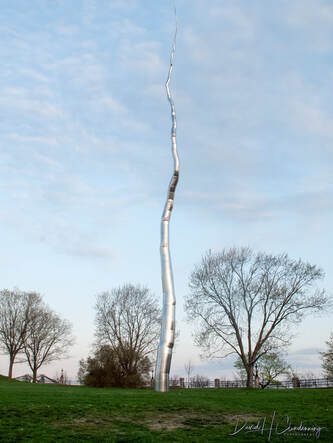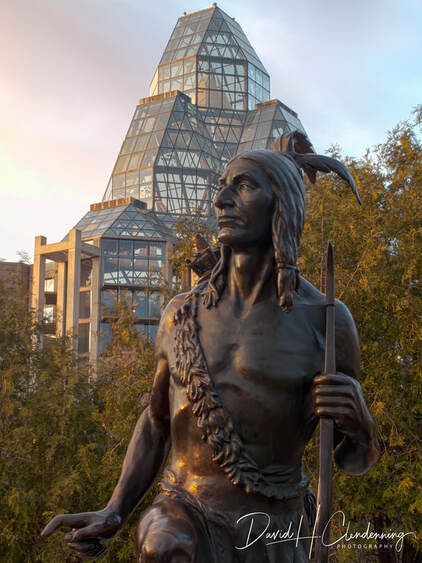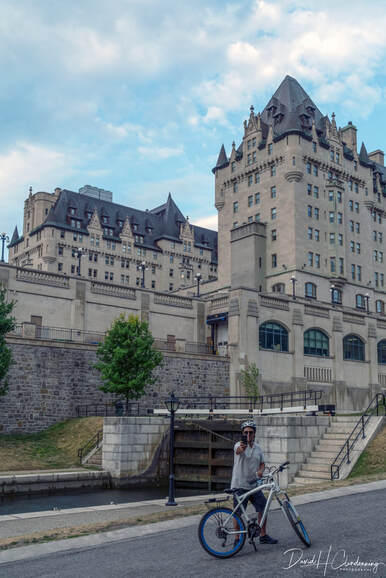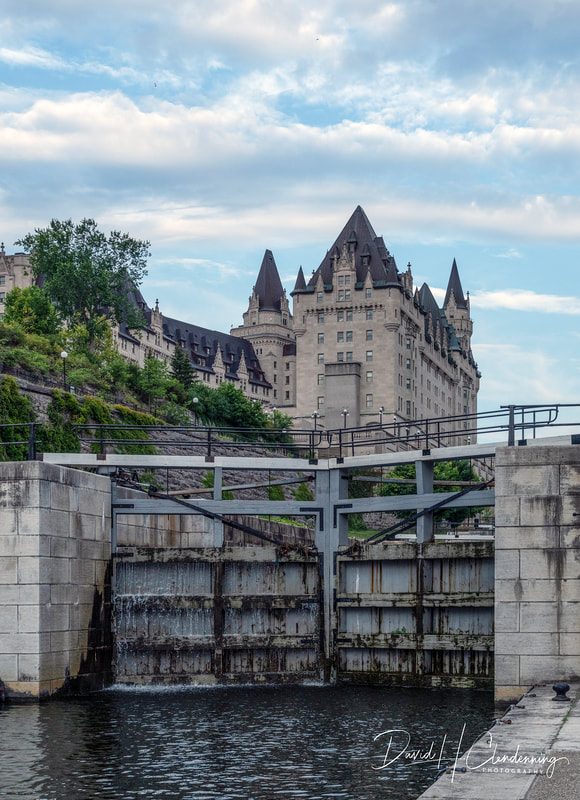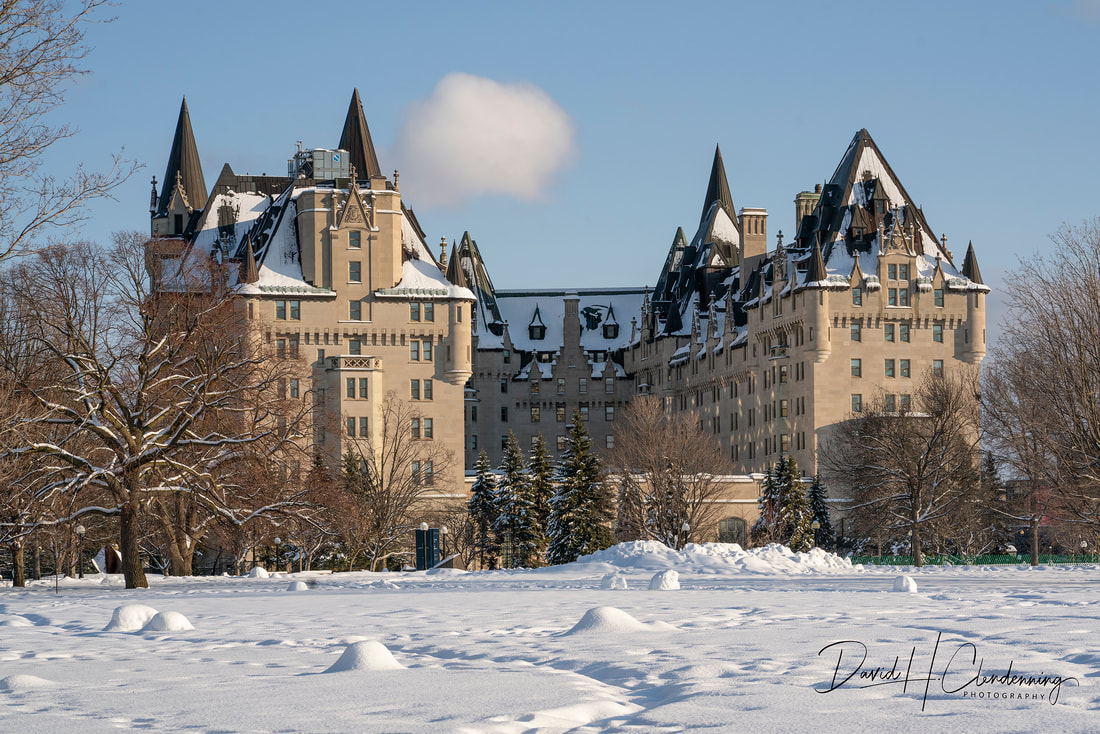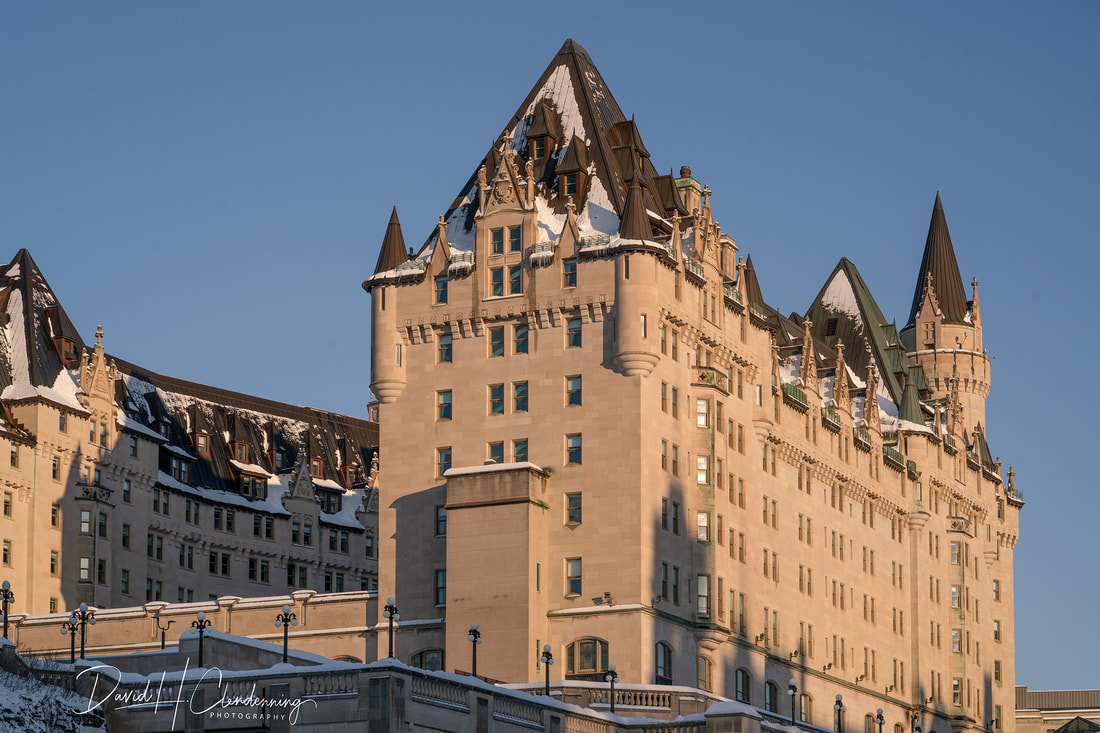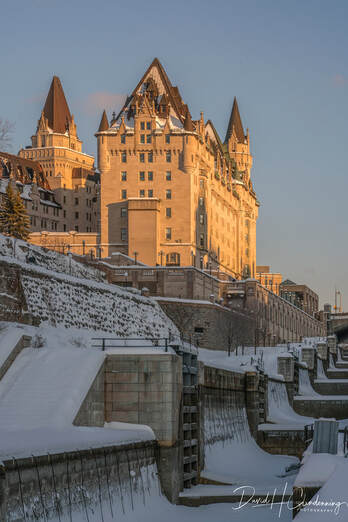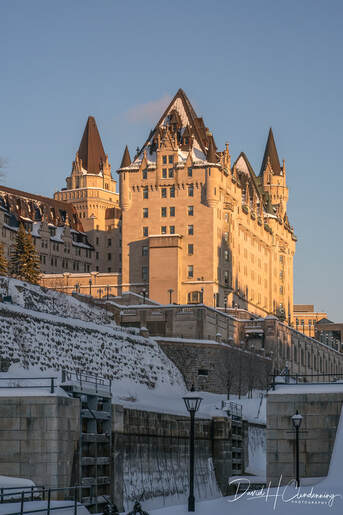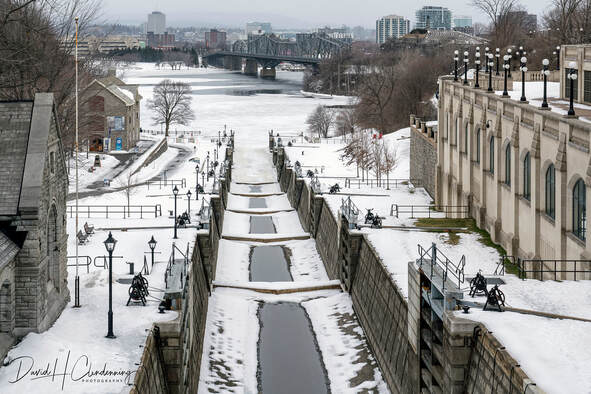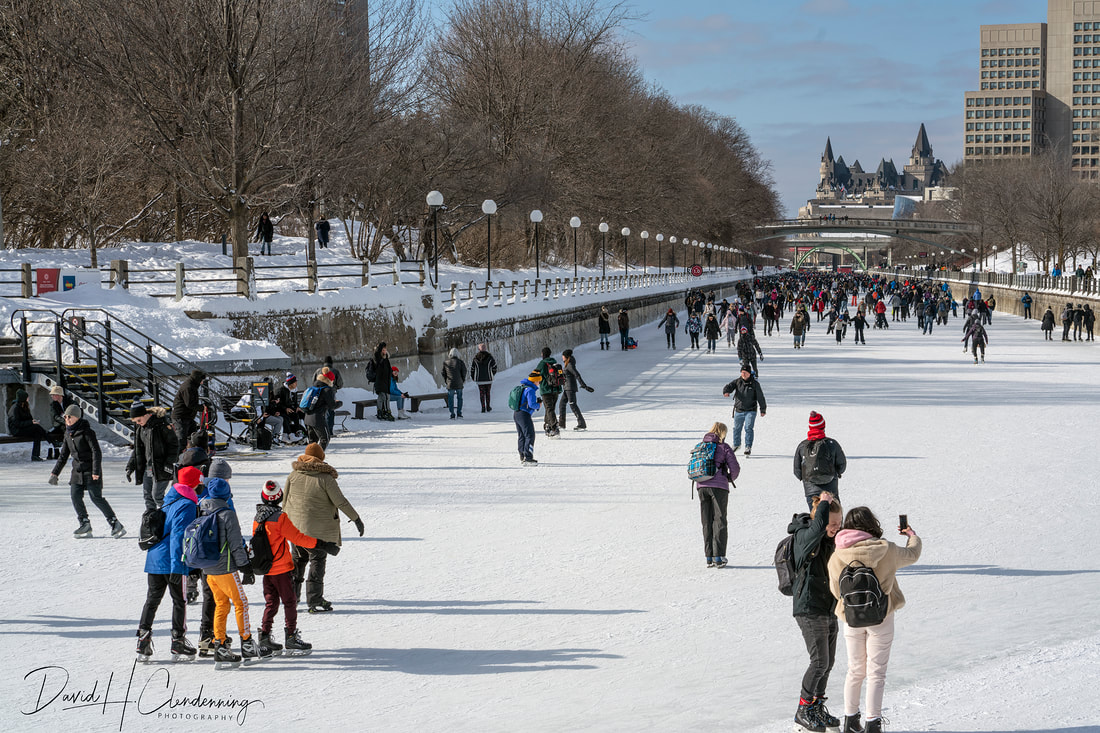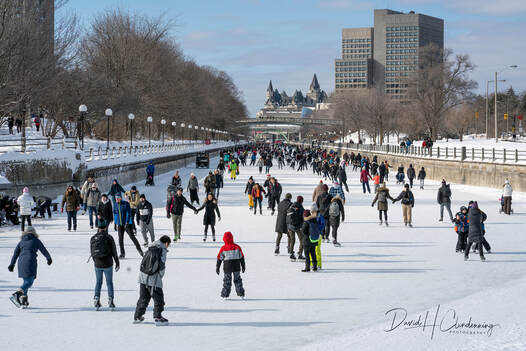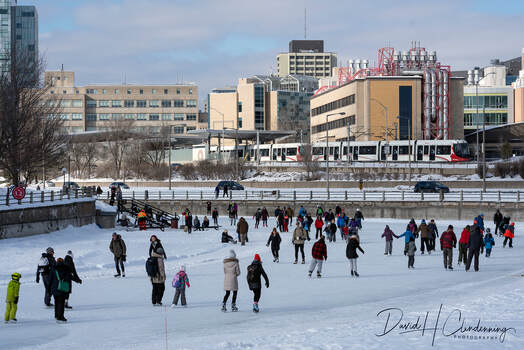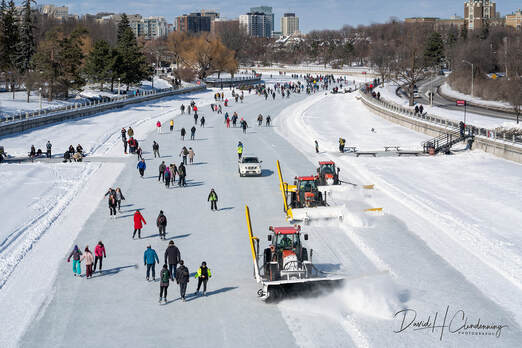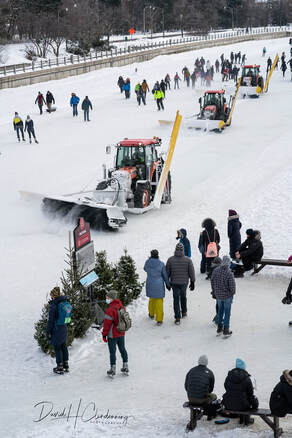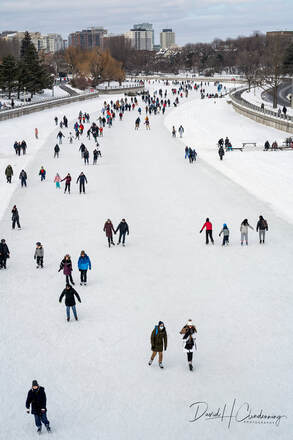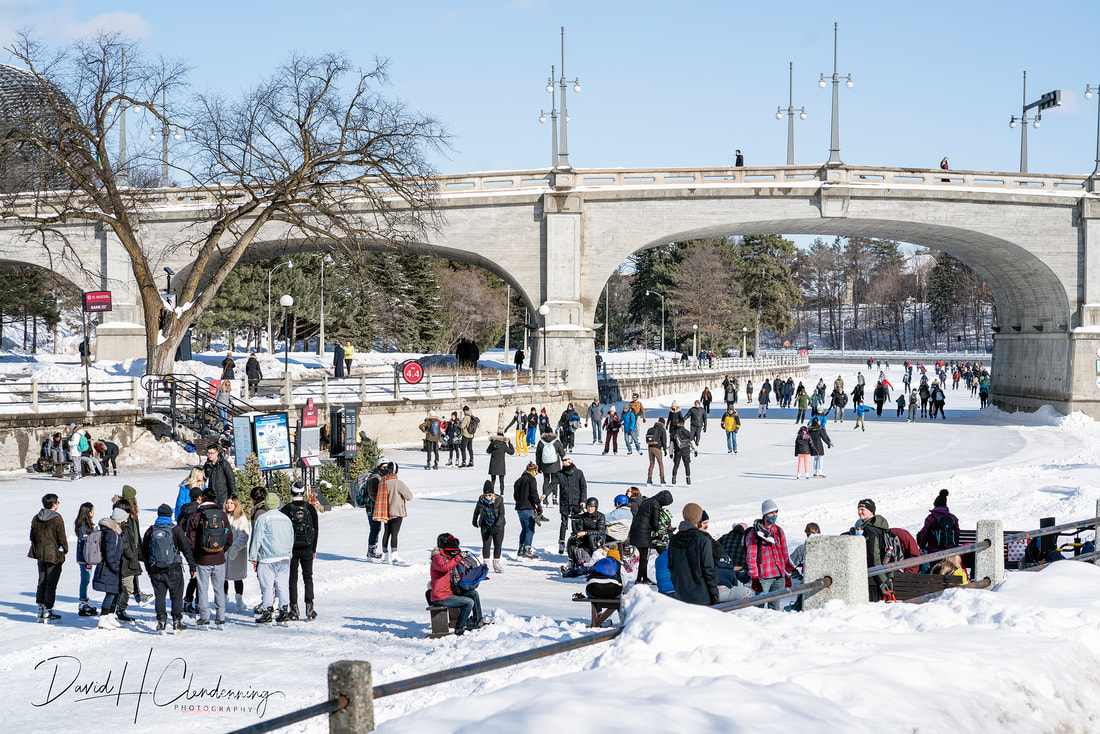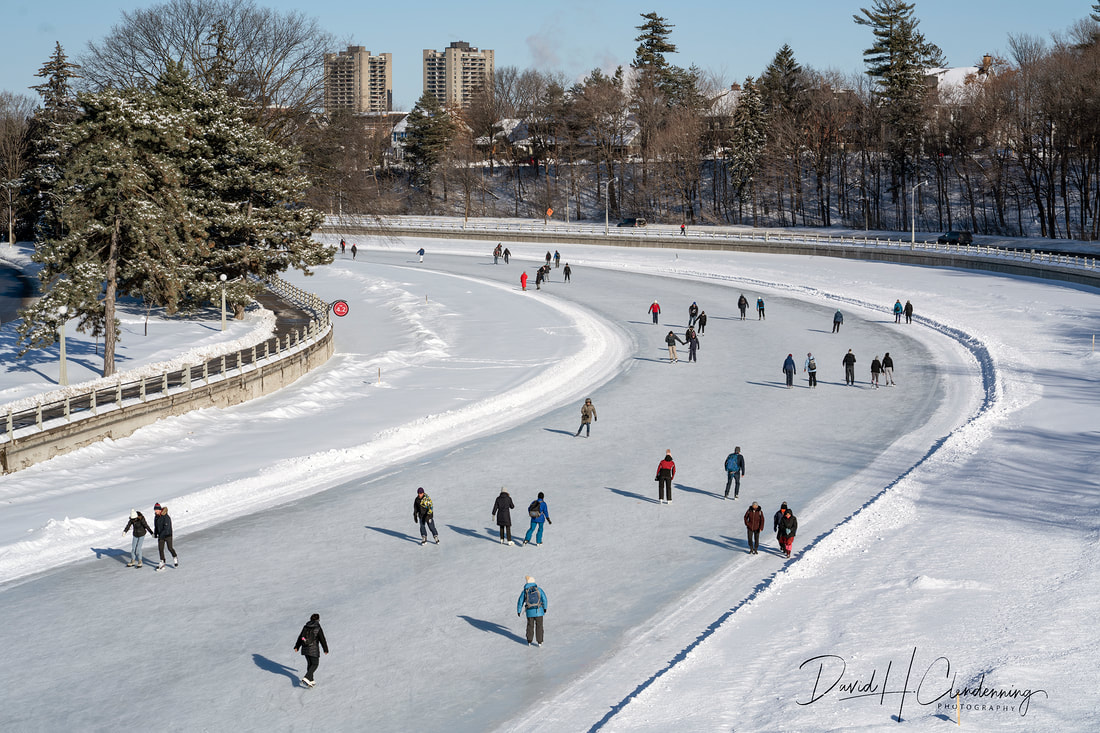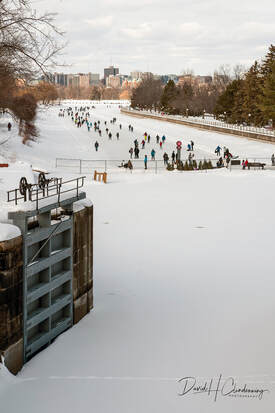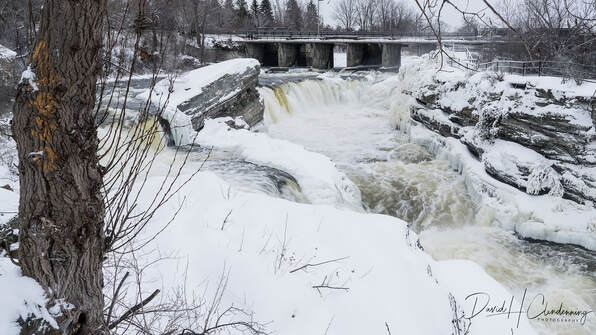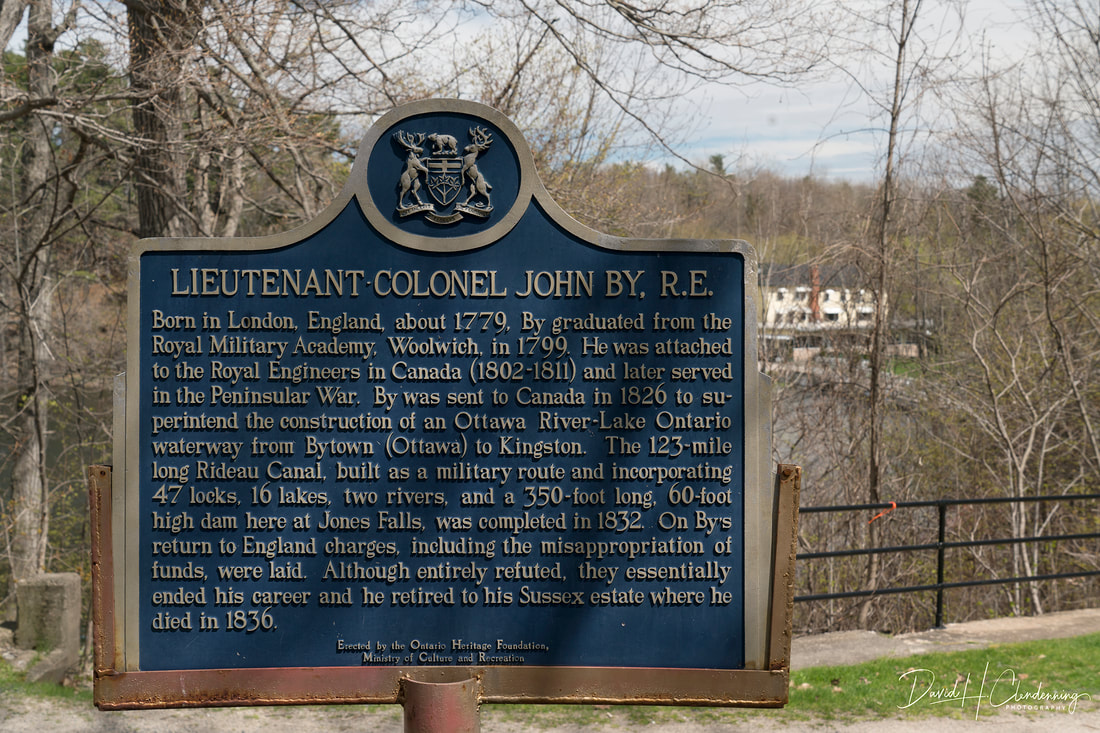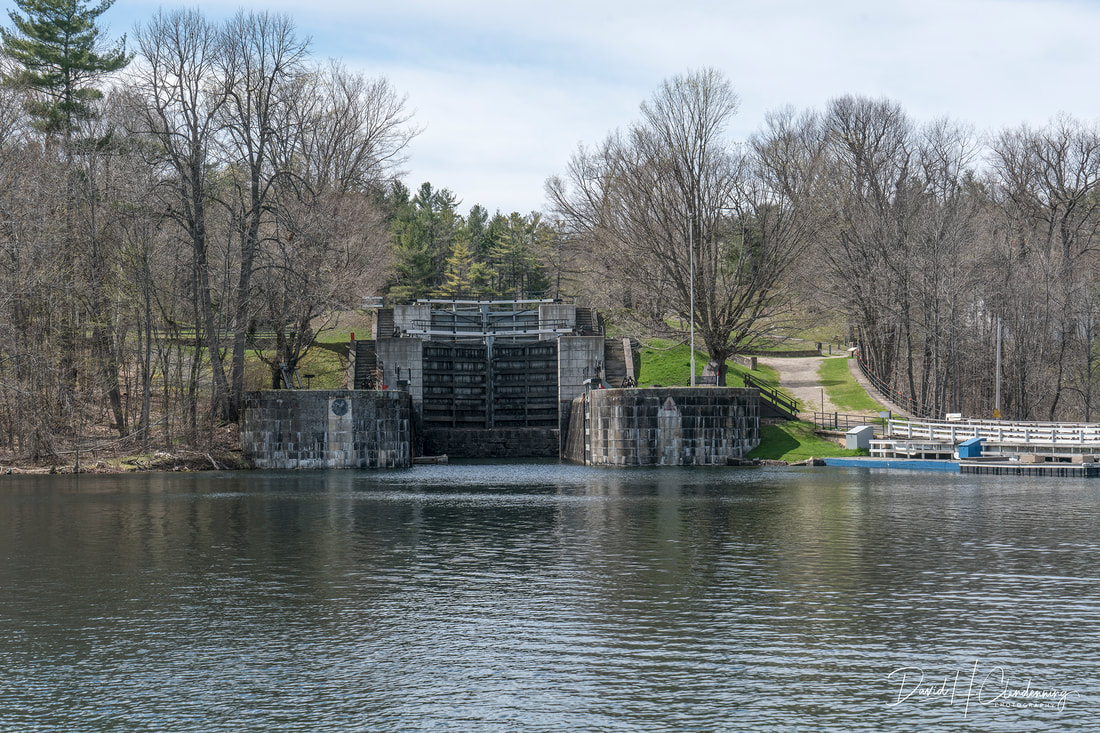One of the most dramatic and historic vistas in the world.
Views of the National Gallery of Canada
Anishinabe Scout now known as Kichi-Zibi-Innini Statue - November 2023
https://ottawacitizen.com/news/local-news/ottawas-kichi-zibi-innini-statue-once-known-as-anishinabe-scout-has-a-new-home-reunited-near-champlain-statue?utm_source=Sailthru&utm_medium=email&utm_campaign=OC%20Health%20Newsletter%202023-11-29&utm_term=OC_Covid19_Newsletter
Controversial ‘scout’ statue gets new name, place of pride in NCC parkKichi Zibi Innini once known as 'Anishinabe Scout' and Samuel de Champlain have both found new homes in Kìwekì Point ParkPublished Nov 29, 2023 • Last updated 5 hours ago • 10 minute read
The controversial figure once known as “Anishinabe Scout” has been given a new position, overlooking a breathtaking clifftop lookout at Kìwekì Point Park — formerly Nepean Point. Photo by Tony Caldwell /PostmediaOne of the most contentious artworks in Ottawa’s history — the Indigenous figure in bronze who infamously knelt for 75 years at the base of French explorer Samuel de Champlain’s towering statue — has finally found a place of pride at a spectacular new site overlooking the Ottawa River.
In late September, workers involved in the National Capital Commission’s ongoing, $6.7-million transformation of Kìwekì Point Park — formerly Nepean Point, the majestic bluff above the Ontario end of the Alexandra Bridge — used a small crane to lift the controversial figure once known as “Anishinabe Scout” into position at a breathtaking clifftop lookout.
It’s been a long and circuitous journey for “Kichi Zibi Innini”.
The Algonquin term for “Great River Man” was recently bestowed on this life-sized representation of a lean, muscly sentinel and master paddler. He is depicted crouched and alert, his bow and quiver of arrows at the ready and his gaze sharply fixed on some distant scene.
The statue was inspired by one of the intrepid Algonquin emissaries and pathfinders who guided Champlain during his landmark expeditions to the Ottawa Valley in the early 17th century.
The statue, barely clothed and typical of the stereotyped representations of “vanishing Indian” figures in 19th- and early 20th-century Canadian artworks, had occupied a spot close to where it is now from 1924 to 1999, though in a context humiliatingly subordinate to Champlain.
In the mid-1990s, the statue’s submissive posture in Champlain’s shadow sparked a national uproar that drew in two grand chiefs of the Assembly of First Nations, the NCC’s top executives and other government officials, as well as art critics, scholars and countless citizens across Canada with strong views on the controversy.
Jun 20, 1996–A protest to confront stereotyped depictions of Indigenous people, spearheaded by Ovide Mercredi culminates in the shrouding of the statue of a kneeling scout at the foot of the Samuel de Champlain statue located at Nepean Point overlooking Parliament Hill and the Ottawa River. Photo by Wayne Cuddington /PostmediaThe figure was eventually moved and spent the next 21 years in a less deferential but more obscure locale at Major’s Hill Park — about 350 metres southwest of its former position, turned toward Parliament Hill and “lurking in the bushes,” as art historian Susan Hart observed in a 2005 essay. The statue was placed in storage in 2020 as the redevelopment of Kìwekì Point and related landscape changes at Major’s Hill got under way.
Now Kichi Zibi Innini is back on its original promontory in a commanding position along the north-side perimeter of Kìwekì Point Park with the Algonquin word “Kìwekì” especially apt since it conveys the notion of “returning to one’s homeland.” The Indigenous figure is located just steps away from the Champlain statue that once loomed imperiously above it.
The statue of Samuel de Champlain has been lowered to ground level and placed not at the apex of Kìwekì Point, but along a winding pathway leading to the top, peering westward. Photo by Tony Caldwell /PostmediaThe original monument’s three-metre-high stone pedestal has been removed, with the Champlain figure now lowered to ground level and placed not at the apex of Kìwekì Point but along a winding pathway leading to the top, peering westward.
The repositioned Anishinabe figure occupies a prime spot high above the water’s edge, an intentional nod to the courage, knowledge and leadership of the Indigenous travellers and de facto diplomats who guided Champlain during his exploration of North America, including his Ottawa River voyages of 1613 and 1615.
It was the 300th anniversary of the second of those expeditions that prompted the 1915 unveiling of sculptor Hamilton MacCarthy’s heroic-scale Champlain at the pinnacle of Nepean Point, the explorer’s trusty astrolabe — a vital navigational instrument for any Renaissance sailor — held dramatically aloft but famously inverted. A plaque affixed to the massive stone pedestal had called Champlain “the first great Canadian.”
Champlain Statue unveiling at Nepean Point in May of 1915. Photo by Photo supplied by NCC /PostmediaThe Indigenous figure was added to the monument nearly a decade later, but the bronze canoe he was supposed to be piloting was never completed due to a budget shortfall. The nameless figure’s awkward, unbecoming depiction beneath Champlain — in apparent subservience far below the booted feet of the much-larger-than-life European — would eventually make the “scout” a hotly-debated symbol of Canada’s mistreatment of the country’s Indigenous peoples.
But to have the two statues entirely “dissociated” and situated hundreds of metres apart in two different parks “just didn’t make much sense,” said Garry Meus, the NCC’s senior landscape architect and design lead on the Kìwekì Point Park redevelopment.
“They’re still bounded together – they still had an experience together,” he explained. “There’s a real reason why the ‘scout’ statue was here to begin with, and how he guided (visitors) and looked out for his people . . . He was the first point of contact.”
Meus said the NCC’s repositioning of the Champlain and Kichi Zibi Innini statues was guided by representatives from the two nearest Ottawa-area Indigenous communities, Algonquins of Pikwakanagan First Nation near Eganville, Ont. and Kitigan Zibi Anishinabeg near Maniwaki, Que.
They advised the commission on renaming the “scout” Kichi Zibi Innini and ensured the figure would occupy a choice location overlooking the Kichi Zibi — the “Great River of the Algonquins,” as it was known historically.
“It’s a beautiful spot — a prominent and more meaningful spot than it was originally at the foot of Champlain,” said Kirby Whiteduck, a former chief at Pikwakanagan and a consultant with the NCC on the Kìwekì Point redevelopment.
Whiteduck described the original placement of Kichi Zibi Innini from the 1920s to 1990s as “negative and demeaning.” To have the Indigenous figure in a kneeling posture beneath the heroically depicted Champlain “was a bad placement, not the best judgment at the time.”
He described the move to Major’s Hill Park as an interim solution that “took away some of the controversy,” but which put the Anishinabe guide “in the background” rather than in a high-profile place of honour.
“Now it’s come back to the point,” he said, calling the relocation a “very significant” action contributing to the overall theme of reconciliation guiding the park’s reconstruction: “I think it’s been very well done.”
Whiteduck added that he and other Algonquin advisors were on hand for the September placement of Kichi Zibi Innini and played “a direct role” in positioning the figure with eyes “looking down the river for any enemies that might be coming up,” or for other traders or travellers.
In 2013, a different name for the statue — Kitchi Zibi Omàmìwininì or “Great River People” — had been adopted informally by advocates urging greater recognition for the Algonquin guide at a time when the 400th anniversary of Champlain’s first expedition to the future Ottawa was being commemorated. Last year, the NCC said the statue of the Indigenous figure would be called “Zibi Aninni,” but the terminology has continued to evolve with input from Indigenous advisors.
Meus said while some may wonder why Champlain has been moved from the pinnacle of the point to a lower location, that statue’s new spot along a “meandering pathway” leading to the highpoint of the park better reflects the French explorer’s anxiety and uncertainty about where exactly he was, where he was going and what he was going to encounter during his Ottawa Valley explorations.
Construction at Kiweki Point Park in Ottawa, Nov. 15, 2023 shows a worker near the new location of the Champlain statue/ TONY CALDWELL, Postmedia. Photo by Tony Caldwell /PostmediaThat sense of a vulnerable, fumbling Champlain is reinforced by the mistake carved into the monument by MacCarthy, who inadvertently depicted the founder of New France holding his astrolabe upside-down. The device was, in fact, lost by Champlain during his travels upriver — possibly the astrolabe found by a farm boy in 1867 near the Upper Ottawa Valley town of Cobden and held today by the Canadian Museum of History.
In contrast, said Meus, Kichi Zibi Innini — now displayed in a way that suggests he’s engaged in strategic reconnaissance as he confidently scans the river corridor — “knows where he is. He is the one that holds the knowledge.”
Timeline of the monument’s historyThere have been other flashpoints in the life of the two statues.
In April 1963, the Indigenous figure was toppled from its plinth and damaged by unknown vandals intent on defacing the Champlain memorial in retribution for the destruction days earlier of a lofty Quebec City monument to Gen. James Wolfe — British victor at the 1759 Battle of the Plains of Abraham — by FLQ-backed separatist vandals.
In 1967, a group of college students from Hull stole the Indigenous figure from Nepean Point as a prank, but quickly confessed and returned the artwork after the RCMP launched an investigation.
A 1995 essay by former Citizen writer Jack Aubry quoted First Nations leaders seething that the original statue made it appear the Indigenous figure was “kissing Champlain’s boots.” The essay also highlighted the absence of artistic tributes to Indigenous peoples in Canada’s capital — and helped fuel a push by the Assembly of First Nations to end what it called the “demeaning” treatment of the figure at Nepean Point by separating it from the Champlain memorial and displaying it alone elsewhere.
The AFN’s campaign gained national attention the following year when then-national chief Ovide Mercredi led a procession past the National Gallery and draped a blanket over the Indigenous figure at Champlain’s feet, demanding that the NCC resolve the controversy within one year — or First Nations activists would dismantle the statue themselves.
The ultimatum sparked a public backlash, with hundreds of Citizen readers insisting the monument be left intact. The sculpter’s family objected to the AFN’s characterization of the sculptor’s work as “offensive” and “racist” and threatened to fight the NCC if it agreed to alter the monument.
Dubbed the “Battle of Nepean Point,” the 1996 public uproar over the monument came in the wake of an earlier high-profile art controversy over the National Gallery’s $1.8-million dollar purchase of U.S. painter Barnett Newman’s seemingly banal abstract masterpiece Voice of Fire.
And MacCarthy’s Indigenous subaltern was even more of a lightning rod than another contentious artwork purchased later by the gallery and erected in its Nepean Point backyard: American sculptor Roxy Paine’s One Hundred Foot Line, the winding, 30-metre-tall stainless steel tree trunk installed in 2011 and which will continue to rise above Kìwekì Point after the scheduled completion of the park’s reconstruction in May 2024.
The NCC eventually agreed to the AFN’s demands and convinced MacCarthy’s family that moving the “Anishinabe Scout” to nearby Major’s Hill — and erecting a tablet linking the figure to the sculptor’s bronze Champlain a short walk away — was the best solution. It took three years to carry out, but the relocation in October 1999 largely quelled the anger among Indigenous leaders over the two-figure monument.
“Sensitivities change over time,” then-NCC chair Marcel Beaudry stated at the 1999 unveiling ceremony. “The commission is sensitive to, and supportive of, the appropriate representation of the Aboriginal peoples.”
Phil Fontaine, Mercredi’s successor as the AFN’s national chief, also attended the dedication of the relocated statue and praised the “new spirit of co-operation” represented by the Indigenous figure’s symbolic liberation from Champlain, adding: “Above all, it is no longer at the feet of one inaccurately portrayed as a founder of this land.”
But Jeff Thomas, an Ottawa-based Iroquoian photographer, objected to the statue’s relocation and went on to produce a series of award-winning artworks showing various individuals posed on the empty plinth below Champlain, where the “Anishinabe Scout” used to be. He created other images showing the relocated Indigenous figure in Major’s Hill Park — including one with the Champlain monument in the distant background and titled Why Do The Indians Always Have to Move? — as critiques of the NCC-AFN agreement to displace the statue from Nepean Point.
Perhaps the best-known of Thomas’s photographs shows fellow Indigenous artist Greg Hill on the vacant plinth at the base of the Champlain monument in a canoe he’d made of cereal boxes, a pointed comment on tired, simplistic depictions of Indigenous figures — including “Anishinabe Scout” — in the history of Canadian art.
Three more things to know about the new Kìwekì Point1A series of eight sculptural animal figures designed by Ottawa-area Algonquin artist John Tenasco including a bear, otter, moose and mythical thunderbird will be installed at Kìwekì Point to help illustrate Indigenous spiritual connections to the land, air, water and wildlife.
2. The NCC and its Indigenous advisors also settled on “Pìdàban Bridge” for the new pedestrian and cyclist crossing that will connect Kìwekì Point Park and Major’s Hill Park. The footbridge, named for the Algonquin term meaning “dawn,” is largely in place now above the road leading to the Alexandra Bridge, but won’t be available for public use until spring. The crossing — a major new active transportation amenity in downtown Ottawa — recalls an earlier era when tourists and local residents could conveniently walk or ride a bike from Major’s Hill to what was then called Nepean Point. A pedestrian overpass at nearly the same location as the Pìdàban Bridge offered picturesque views of the Ottawa River, Parliament Hill and the Quebec shoreline between 1912 and 1959, when the iron structure was dismantled for safety reasons.
3. The renamings and other Indigenous-themed initiatives in and around Kìwekì Point Park are meant to “showcase elements of Algonquin culture and language” while providing “a unique opportunity for Canadians visiting the site to learn more about the Algonquin Nation,” the NCC said in a statement last year.
PHOTOS FROM THE ARCHIVES
Ottawa Citizen photo by John Major, published Jan. 11, 2000 Photo by Citizen /OTT
Jun 20, 1996–A protest to confront racial depictions of Indigenous people at the former Nepean Point, overlooking Parliament Hill, was spearheaded by Ovide Mercredi. Wayne Cuddington/Postmedia Wayne Cuddington
OTTAWA, ONT JULY 10, 2009 — Monument to Samuel de Champlain. Nepean Point. Chris Mikula / The Ottawa Citizen Photo by Chris Mikula /The Ottawa Citizen
https://ottawacitizen.com/news/local-news/ottawas-kichi-zibi-innini-statue-once-known-as-anishinabe-scout-has-a-new-home-reunited-near-champlain-statue?utm_source=Sailthru&utm_medium=email&utm_campaign=OC%20Health%20Newsletter%202023-11-29&utm_term=OC_Covid19_Newsletter
Controversial ‘scout’ statue gets new name, place of pride in NCC parkKichi Zibi Innini once known as 'Anishinabe Scout' and Samuel de Champlain have both found new homes in Kìwekì Point ParkPublished Nov 29, 2023 • Last updated 5 hours ago • 10 minute read
The controversial figure once known as “Anishinabe Scout” has been given a new position, overlooking a breathtaking clifftop lookout at Kìwekì Point Park — formerly Nepean Point. Photo by Tony Caldwell /PostmediaOne of the most contentious artworks in Ottawa’s history — the Indigenous figure in bronze who infamously knelt for 75 years at the base of French explorer Samuel de Champlain’s towering statue — has finally found a place of pride at a spectacular new site overlooking the Ottawa River.
In late September, workers involved in the National Capital Commission’s ongoing, $6.7-million transformation of Kìwekì Point Park — formerly Nepean Point, the majestic bluff above the Ontario end of the Alexandra Bridge — used a small crane to lift the controversial figure once known as “Anishinabe Scout” into position at a breathtaking clifftop lookout.
It’s been a long and circuitous journey for “Kichi Zibi Innini”.
The Algonquin term for “Great River Man” was recently bestowed on this life-sized representation of a lean, muscly sentinel and master paddler. He is depicted crouched and alert, his bow and quiver of arrows at the ready and his gaze sharply fixed on some distant scene.
The statue was inspired by one of the intrepid Algonquin emissaries and pathfinders who guided Champlain during his landmark expeditions to the Ottawa Valley in the early 17th century.
The statue, barely clothed and typical of the stereotyped representations of “vanishing Indian” figures in 19th- and early 20th-century Canadian artworks, had occupied a spot close to where it is now from 1924 to 1999, though in a context humiliatingly subordinate to Champlain.
In the mid-1990s, the statue’s submissive posture in Champlain’s shadow sparked a national uproar that drew in two grand chiefs of the Assembly of First Nations, the NCC’s top executives and other government officials, as well as art critics, scholars and countless citizens across Canada with strong views on the controversy.
Jun 20, 1996–A protest to confront stereotyped depictions of Indigenous people, spearheaded by Ovide Mercredi culminates in the shrouding of the statue of a kneeling scout at the foot of the Samuel de Champlain statue located at Nepean Point overlooking Parliament Hill and the Ottawa River. Photo by Wayne Cuddington /PostmediaThe figure was eventually moved and spent the next 21 years in a less deferential but more obscure locale at Major’s Hill Park — about 350 metres southwest of its former position, turned toward Parliament Hill and “lurking in the bushes,” as art historian Susan Hart observed in a 2005 essay. The statue was placed in storage in 2020 as the redevelopment of Kìwekì Point and related landscape changes at Major’s Hill got under way.
Now Kichi Zibi Innini is back on its original promontory in a commanding position along the north-side perimeter of Kìwekì Point Park with the Algonquin word “Kìwekì” especially apt since it conveys the notion of “returning to one’s homeland.” The Indigenous figure is located just steps away from the Champlain statue that once loomed imperiously above it.
The statue of Samuel de Champlain has been lowered to ground level and placed not at the apex of Kìwekì Point, but along a winding pathway leading to the top, peering westward. Photo by Tony Caldwell /PostmediaThe original monument’s three-metre-high stone pedestal has been removed, with the Champlain figure now lowered to ground level and placed not at the apex of Kìwekì Point but along a winding pathway leading to the top, peering westward.
The repositioned Anishinabe figure occupies a prime spot high above the water’s edge, an intentional nod to the courage, knowledge and leadership of the Indigenous travellers and de facto diplomats who guided Champlain during his exploration of North America, including his Ottawa River voyages of 1613 and 1615.
It was the 300th anniversary of the second of those expeditions that prompted the 1915 unveiling of sculptor Hamilton MacCarthy’s heroic-scale Champlain at the pinnacle of Nepean Point, the explorer’s trusty astrolabe — a vital navigational instrument for any Renaissance sailor — held dramatically aloft but famously inverted. A plaque affixed to the massive stone pedestal had called Champlain “the first great Canadian.”
Champlain Statue unveiling at Nepean Point in May of 1915. Photo by Photo supplied by NCC /PostmediaThe Indigenous figure was added to the monument nearly a decade later, but the bronze canoe he was supposed to be piloting was never completed due to a budget shortfall. The nameless figure’s awkward, unbecoming depiction beneath Champlain — in apparent subservience far below the booted feet of the much-larger-than-life European — would eventually make the “scout” a hotly-debated symbol of Canada’s mistreatment of the country’s Indigenous peoples.
But to have the two statues entirely “dissociated” and situated hundreds of metres apart in two different parks “just didn’t make much sense,” said Garry Meus, the NCC’s senior landscape architect and design lead on the Kìwekì Point Park redevelopment.
“They’re still bounded together – they still had an experience together,” he explained. “There’s a real reason why the ‘scout’ statue was here to begin with, and how he guided (visitors) and looked out for his people . . . He was the first point of contact.”
Meus said the NCC’s repositioning of the Champlain and Kichi Zibi Innini statues was guided by representatives from the two nearest Ottawa-area Indigenous communities, Algonquins of Pikwakanagan First Nation near Eganville, Ont. and Kitigan Zibi Anishinabeg near Maniwaki, Que.
They advised the commission on renaming the “scout” Kichi Zibi Innini and ensured the figure would occupy a choice location overlooking the Kichi Zibi — the “Great River of the Algonquins,” as it was known historically.
“It’s a beautiful spot — a prominent and more meaningful spot than it was originally at the foot of Champlain,” said Kirby Whiteduck, a former chief at Pikwakanagan and a consultant with the NCC on the Kìwekì Point redevelopment.
Whiteduck described the original placement of Kichi Zibi Innini from the 1920s to 1990s as “negative and demeaning.” To have the Indigenous figure in a kneeling posture beneath the heroically depicted Champlain “was a bad placement, not the best judgment at the time.”
He described the move to Major’s Hill Park as an interim solution that “took away some of the controversy,” but which put the Anishinabe guide “in the background” rather than in a high-profile place of honour.
“Now it’s come back to the point,” he said, calling the relocation a “very significant” action contributing to the overall theme of reconciliation guiding the park’s reconstruction: “I think it’s been very well done.”
Whiteduck added that he and other Algonquin advisors were on hand for the September placement of Kichi Zibi Innini and played “a direct role” in positioning the figure with eyes “looking down the river for any enemies that might be coming up,” or for other traders or travellers.
In 2013, a different name for the statue — Kitchi Zibi Omàmìwininì or “Great River People” — had been adopted informally by advocates urging greater recognition for the Algonquin guide at a time when the 400th anniversary of Champlain’s first expedition to the future Ottawa was being commemorated. Last year, the NCC said the statue of the Indigenous figure would be called “Zibi Aninni,” but the terminology has continued to evolve with input from Indigenous advisors.
Meus said while some may wonder why Champlain has been moved from the pinnacle of the point to a lower location, that statue’s new spot along a “meandering pathway” leading to the highpoint of the park better reflects the French explorer’s anxiety and uncertainty about where exactly he was, where he was going and what he was going to encounter during his Ottawa Valley explorations.
Construction at Kiweki Point Park in Ottawa, Nov. 15, 2023 shows a worker near the new location of the Champlain statue/ TONY CALDWELL, Postmedia. Photo by Tony Caldwell /PostmediaThat sense of a vulnerable, fumbling Champlain is reinforced by the mistake carved into the monument by MacCarthy, who inadvertently depicted the founder of New France holding his astrolabe upside-down. The device was, in fact, lost by Champlain during his travels upriver — possibly the astrolabe found by a farm boy in 1867 near the Upper Ottawa Valley town of Cobden and held today by the Canadian Museum of History.
In contrast, said Meus, Kichi Zibi Innini — now displayed in a way that suggests he’s engaged in strategic reconnaissance as he confidently scans the river corridor — “knows where he is. He is the one that holds the knowledge.”
Timeline of the monument’s historyThere have been other flashpoints in the life of the two statues.
In April 1963, the Indigenous figure was toppled from its plinth and damaged by unknown vandals intent on defacing the Champlain memorial in retribution for the destruction days earlier of a lofty Quebec City monument to Gen. James Wolfe — British victor at the 1759 Battle of the Plains of Abraham — by FLQ-backed separatist vandals.
In 1967, a group of college students from Hull stole the Indigenous figure from Nepean Point as a prank, but quickly confessed and returned the artwork after the RCMP launched an investigation.
A 1995 essay by former Citizen writer Jack Aubry quoted First Nations leaders seething that the original statue made it appear the Indigenous figure was “kissing Champlain’s boots.” The essay also highlighted the absence of artistic tributes to Indigenous peoples in Canada’s capital — and helped fuel a push by the Assembly of First Nations to end what it called the “demeaning” treatment of the figure at Nepean Point by separating it from the Champlain memorial and displaying it alone elsewhere.
The AFN’s campaign gained national attention the following year when then-national chief Ovide Mercredi led a procession past the National Gallery and draped a blanket over the Indigenous figure at Champlain’s feet, demanding that the NCC resolve the controversy within one year — or First Nations activists would dismantle the statue themselves.
The ultimatum sparked a public backlash, with hundreds of Citizen readers insisting the monument be left intact. The sculpter’s family objected to the AFN’s characterization of the sculptor’s work as “offensive” and “racist” and threatened to fight the NCC if it agreed to alter the monument.
Dubbed the “Battle of Nepean Point,” the 1996 public uproar over the monument came in the wake of an earlier high-profile art controversy over the National Gallery’s $1.8-million dollar purchase of U.S. painter Barnett Newman’s seemingly banal abstract masterpiece Voice of Fire.
And MacCarthy’s Indigenous subaltern was even more of a lightning rod than another contentious artwork purchased later by the gallery and erected in its Nepean Point backyard: American sculptor Roxy Paine’s One Hundred Foot Line, the winding, 30-metre-tall stainless steel tree trunk installed in 2011 and which will continue to rise above Kìwekì Point after the scheduled completion of the park’s reconstruction in May 2024.
The NCC eventually agreed to the AFN’s demands and convinced MacCarthy’s family that moving the “Anishinabe Scout” to nearby Major’s Hill — and erecting a tablet linking the figure to the sculptor’s bronze Champlain a short walk away — was the best solution. It took three years to carry out, but the relocation in October 1999 largely quelled the anger among Indigenous leaders over the two-figure monument.
“Sensitivities change over time,” then-NCC chair Marcel Beaudry stated at the 1999 unveiling ceremony. “The commission is sensitive to, and supportive of, the appropriate representation of the Aboriginal peoples.”
Phil Fontaine, Mercredi’s successor as the AFN’s national chief, also attended the dedication of the relocated statue and praised the “new spirit of co-operation” represented by the Indigenous figure’s symbolic liberation from Champlain, adding: “Above all, it is no longer at the feet of one inaccurately portrayed as a founder of this land.”
But Jeff Thomas, an Ottawa-based Iroquoian photographer, objected to the statue’s relocation and went on to produce a series of award-winning artworks showing various individuals posed on the empty plinth below Champlain, where the “Anishinabe Scout” used to be. He created other images showing the relocated Indigenous figure in Major’s Hill Park — including one with the Champlain monument in the distant background and titled Why Do The Indians Always Have to Move? — as critiques of the NCC-AFN agreement to displace the statue from Nepean Point.
Perhaps the best-known of Thomas’s photographs shows fellow Indigenous artist Greg Hill on the vacant plinth at the base of the Champlain monument in a canoe he’d made of cereal boxes, a pointed comment on tired, simplistic depictions of Indigenous figures — including “Anishinabe Scout” — in the history of Canadian art.
Three more things to know about the new Kìwekì Point1A series of eight sculptural animal figures designed by Ottawa-area Algonquin artist John Tenasco including a bear, otter, moose and mythical thunderbird will be installed at Kìwekì Point to help illustrate Indigenous spiritual connections to the land, air, water and wildlife.
2. The NCC and its Indigenous advisors also settled on “Pìdàban Bridge” for the new pedestrian and cyclist crossing that will connect Kìwekì Point Park and Major’s Hill Park. The footbridge, named for the Algonquin term meaning “dawn,” is largely in place now above the road leading to the Alexandra Bridge, but won’t be available for public use until spring. The crossing — a major new active transportation amenity in downtown Ottawa — recalls an earlier era when tourists and local residents could conveniently walk or ride a bike from Major’s Hill to what was then called Nepean Point. A pedestrian overpass at nearly the same location as the Pìdàban Bridge offered picturesque views of the Ottawa River, Parliament Hill and the Quebec shoreline between 1912 and 1959, when the iron structure was dismantled for safety reasons.
3. The renamings and other Indigenous-themed initiatives in and around Kìwekì Point Park are meant to “showcase elements of Algonquin culture and language” while providing “a unique opportunity for Canadians visiting the site to learn more about the Algonquin Nation,” the NCC said in a statement last year.
PHOTOS FROM THE ARCHIVES
Ottawa Citizen photo by John Major, published Jan. 11, 2000 Photo by Citizen /OTT
Jun 20, 1996–A protest to confront racial depictions of Indigenous people at the former Nepean Point, overlooking Parliament Hill, was spearheaded by Ovide Mercredi. Wayne Cuddington/Postmedia Wayne Cuddington
OTTAWA, ONT JULY 10, 2009 — Monument to Samuel de Champlain. Nepean Point. Chris Mikula / The Ottawa Citizen Photo by Chris Mikula /The Ottawa Citizen
This kneeling bronze statue to the Anishnabe scout demonstrates that the Native people had acted as guides for Champlain and also recognizes the role of First Nations people in the development of Canada.
Major's Hill Park
Once known as Colonel's Hill after Lieutenant-Colonel John By, builder of the Rideau Canal, the area's name was changed when Major Daniel Bolton took up residence on the hill. Ottawa's first park, Major's Hill remains a picturesque setting for citizens and visiting tourists.
Once known as Colonel's Hill after Lieutenant-Colonel John By, builder of the Rideau Canal, the area's name was changed when Major Daniel Bolton took up residence on the hill. Ottawa's first park, Major's Hill remains a picturesque setting for citizens and visiting tourists.
Chateau Laurier in Winter, February 2021
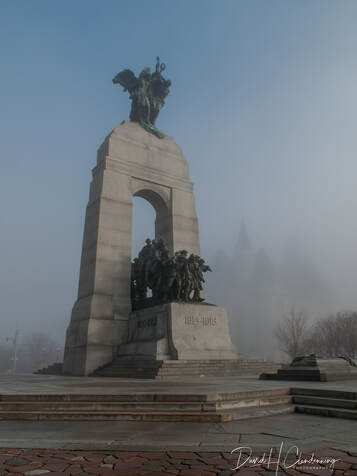 Title: Canadian War Memorial with Chateau Laurier Hotel in background.
Location: Ottawa, Canada.
Order No.: A1-1198.
Title: Canadian War Memorial with Chateau Laurier Hotel in background.
Location: Ottawa, Canada.
Order No.: A1-1198.
Canadian National War Memorial, Ottawa
The Great Response of Canada
In 1926, British sculpor Vernon March won the competition for Canada's First World War memorial in Ottawa. The sculpture to commemorate "The Response." of Canadians in the First World War, has, over the years, come to symbolize the sacrifice of all Canadians who have served Canada in time of war in the cause of peace and freedom. The dates 1939-1945 and 1950-1953 have been added in bronze numerals on each side of the memorial.
The Tomb of the Unknown Soldier was added to the base of the war memorial in May 2000.
Rising 21 metres from its base, the memorial consists of twenty-two larger-than-life bronze figures, including infantrymen, an airman, sailors, gunners, cavalrymen, a nursing sister and others advancing through an arch of granite bearing the allegorical figures of Peace and Freedom.
The allegorical figures of peace and freedom at the top to the monument are 5.33 metres in height. The figures are one-third greater than life size, each standing about 2.44 metres tall. In the faces of the marching figures there is character and purpose, sincerity and good intent. The figures are not shown in fighting attitudes, but rather express movement and the enthusiasm and eagerness of the people.
King George V1 unveiled the National War Monument in May 1939, just over three months before the outbreak of the Second World War.
The Great Response of Canada
In 1926, British sculpor Vernon March won the competition for Canada's First World War memorial in Ottawa. The sculpture to commemorate "The Response." of Canadians in the First World War, has, over the years, come to symbolize the sacrifice of all Canadians who have served Canada in time of war in the cause of peace and freedom. The dates 1939-1945 and 1950-1953 have been added in bronze numerals on each side of the memorial.
The Tomb of the Unknown Soldier was added to the base of the war memorial in May 2000.
Rising 21 metres from its base, the memorial consists of twenty-two larger-than-life bronze figures, including infantrymen, an airman, sailors, gunners, cavalrymen, a nursing sister and others advancing through an arch of granite bearing the allegorical figures of Peace and Freedom.
The allegorical figures of peace and freedom at the top to the monument are 5.33 metres in height. The figures are one-third greater than life size, each standing about 2.44 metres tall. In the faces of the marching figures there is character and purpose, sincerity and good intent. The figures are not shown in fighting attitudes, but rather express movement and the enthusiasm and eagerness of the people.
King George V1 unveiled the National War Monument in May 1939, just over three months before the outbreak of the Second World War.
Rideau Canal Meets the Ottawa River.
Skating on the Rideau Canal in the centre of Ottawa
Further down the Rideau Canal towards Kingston at the Jones Falls Lock
